Blackberry, that small fleshy fruit with deep shades of purple and black, is a summer delight many eagerly await. Not only does it burst with flavour, but it also offers a multitude of health benefits. However, harvesting blackberries at their peak ripeness and storing them correctly are crucial steps to fully enjoy their taste and freshness. In this tutorial, we will guide you through the blackberry harvesting process and provide proven tips for preserving them, so you can savour their delicacy long after picking season.
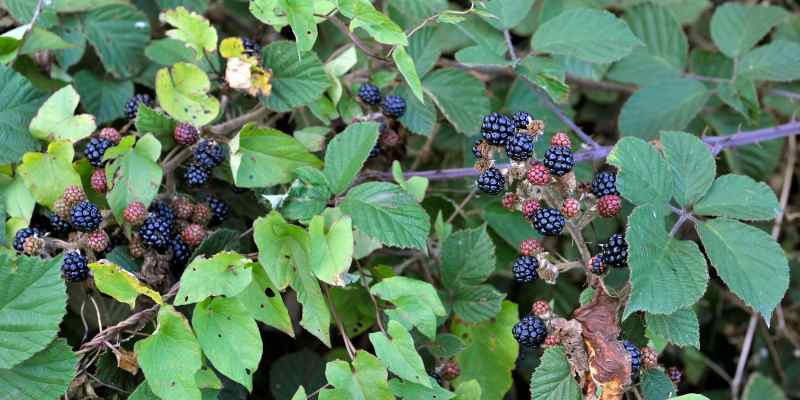
Blackberries ? What are we talking about ?
The French vernacular term "mûre" can be confusing, as it can denote two fruits produced by different plants. Although both fruits share the same common name in some languages and cultures, it is important to make the distinction because their characteristics, flavours and uses differ.
Bramble blackberry or Rubus sp.
This blackberry is the fruit of the bramble, a plant of the genus Rubus (which belongs to family Rosaceae). It is actually composed of an aggregate of small drupes (called drupelets) attached to a central receptacle. When a ripe blackberry is picked, it detaches with its receptacle, giving the fruit its characteristic shape.
Brambles are common in many regions worldwide, often growing wild along paths, in clearings or in disturbed areas.
Mulberry or Morus sp.
This berry is the fruit of the mulberry tree, a tree of the genus Morus (which belongs to family Moraceae, same family as fig). Like the bramble blackberry, mulberry fruit is also made of drupelets, but it has a different texture and taste. These fruits are often elongated and can be red, black or white depending on mulberry variety.

Harvesting blackberries
Bramble blackberries
Bramble blackberries are generally ready to harvest at end of summer or early autumn, depending on region and climate. Exact timing can vary year to year according to weather conditions.
Ripe blackberries (ha ha!) will be a deep, glossy black. Avoid fruits that are still red or pale, as they are not fully ripe. Blackberries should come away easily from the bush when picked. If you have to tug hard or the fruit resists, it is probably not ready. Ripe blackberries will have a soft, juicy texture.
Try to harvest blackberries early in the morning, after the dew has dried but before the day's heat sets in. They will be fresher and less likely to be crushed. If possible, eat or process blackberries on day of picking, as they are very perishable. If you must store them, place in a single layer in a container and keep in fridge. Avoid washing blackberries until ready to use to prevent them becoming mushy.
Warning! In some regions, take care when harvesting blackberries because of foxes. This precaution is related to a parasite carried by foxes called Echinococcus multilocularis. This parasite causes alveolar echinococcosis in humans. When an infected fox defecates, its faeces can contain eggs of this parasite. These eggs, which are microscopic, can end up on fruit, vegetables and other plants. If humans accidentally consume these eggs, for example by eating contaminated blackberries, they can develop alveolar echinococcosis, a serious disease. It is therefore advisable to pick fruits at least 1 metre high, wash fruit thoroughly or consume blackberries only cooked, for example in jam.
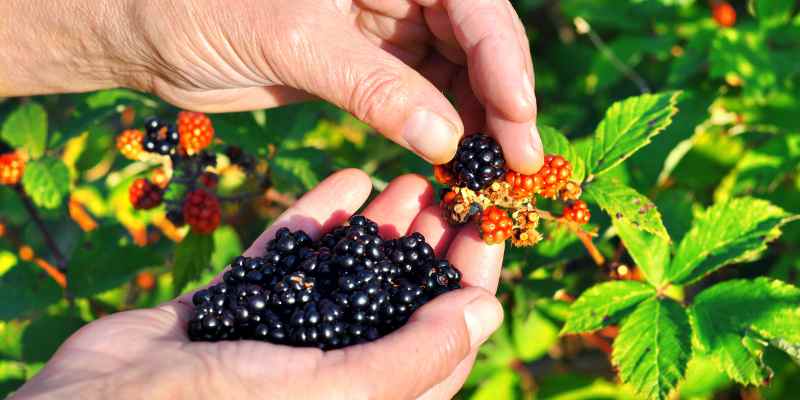
Mulberries
Harvesting mulberries (sometimes called murons) requires a slightly different approach to bramble blackberries. These delicious fruits are generally more delicate and can vary in colour depending on mulberry variety (black, red or white).
Mulberries are generally ready to harvest in late spring or early summer, depending on climate and mulberry variety.
Ripe mulberries will change colour. Black mulberries will be deep black, red mulberries will be dark red, and white mulberries will be translucent white. Fruits should be full, fleshy and come away easily from the tree. If you have to tug hard, the fruit is probably not yet ripe. A ripe mulberry will feel soft to the touch.
As with bramble blackberries, it is best to harvest mulberries early in the morning. These fruits are very perishable. Eat or process them quickly after picking. To store, place in a single layer on a plate or tray and put in fridge. Wash mulberries only just before eating or using in a recipe.
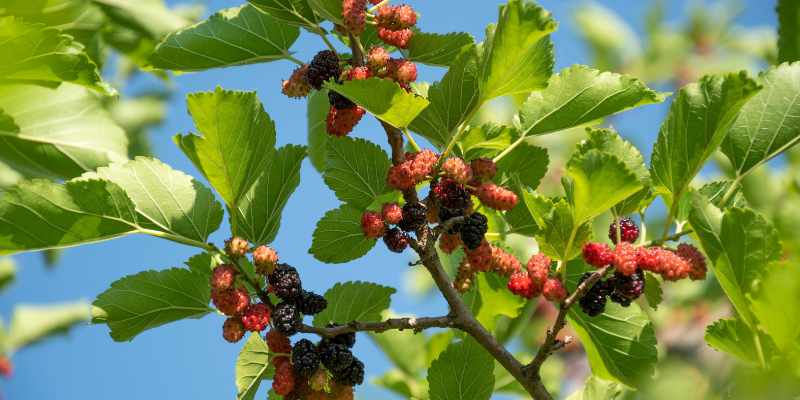
Storing blackberries
Blackberries, whether from bramble or mulberry, are delicate fruits that tend to deteriorate quickly once picked. However, with appropriate care you can prolong their freshness or preserve them for later use. Here is how to proceed for each type of berry:
Bramble blackberries:
- Short-term storage :
- Place blackberries in a single layer on a plate or tray lined with absorbent paper.
- Store in fridge and consume within 2-3 days for best flavour.
- Freezing :
- Gently wash blackberries and drain.
- Spread them in a single layer on a baking sheet and place in freezer until fully frozen.
- Transfer frozen blackberries into airtight freezer bags or containers to keep for up to one year.
- Preserving as jam or jelly :
- Bramble blackberries are well suited to making jams, jellies and preserves.
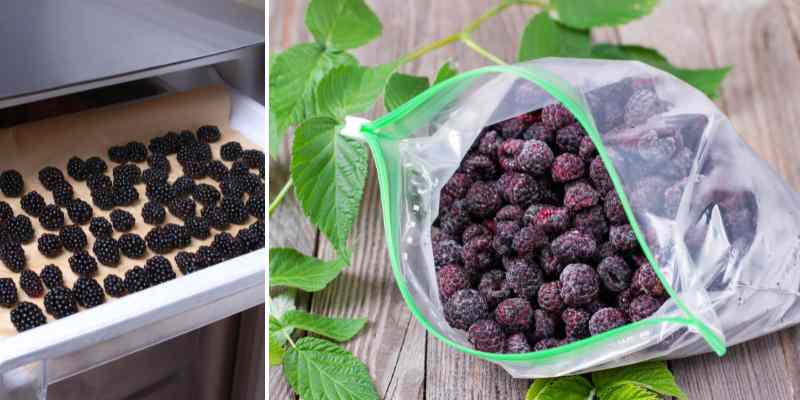
Mulberries:
- Short-term storage :
- As with bramble blackberries, place mulberries in a single layer on a plate or tray and store in fridge.
- Avoid washing until ready to eat, as extra moisture can accelerate deterioration.
- Freezing :
- Follow same method as for bramble blackberries: wash, freeze in single layer, then store in airtight containers.
- Other preservation methods :
- Mulberries can also be made into jams, jellies or preserves.
- You can also dry them using a dehydrator to use like raisins in various recipes or snack on them.
For both types of fruit, if you plan to preserve them as jam or other preparations, it is essential to follow proper preservation methods such as sterilising jars and pasteurisation to ensure safety and longevity of your preserves.
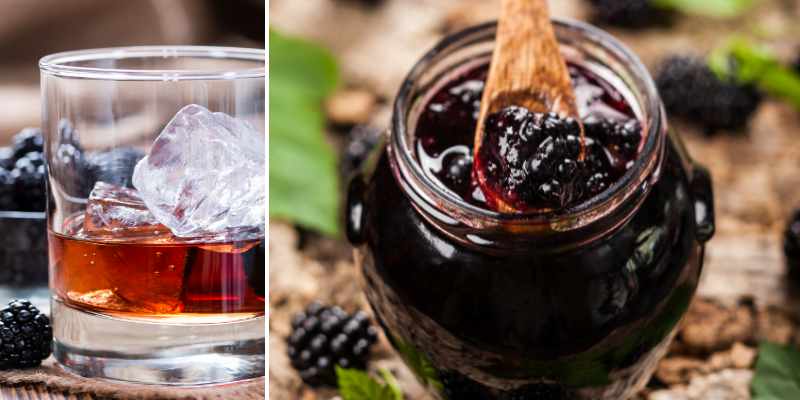
Equipment needed
For harvesting :
- - Basket or container : Prefer a shallow basket or large bowl to avoid stacking too many blackberries on top of each other, as they are delicate and can be easily crushed.
- - Gloves : If harvesting bramble blackberries, gloves can help protect hands from thorns.
- - Appropriate clothing : Wear long sleeves and trousers to protect from thorns and scratches, especially when picking in wooded or brambly areas.
For storage :
- - Airtight containers : For short-term fridge storage of blackberries.
- - Freezer bags : If you plan to freeze your blackberries. Zip-lock bags with double seals are preferable to avoid freezer burn.
- - Baking sheet : Useful for freezing blackberries in a single layer before transferring to freezer bags.
- - Absorbent paper : To dry blackberries after washing and before freezing or storing.
- - Glass jars with lids : If you plan to make jams, jellies or preserves. Ensure jars are clean and lids are new for good preservation.
- - Large pot : For cooking jams and sterilising jars.
- - Jam funnel : Useful for pouring hot jam into jars without making a mess.
- - Jar lifter : For handling hot jars during sterilisation.
- - Jam thermometer : If making jam, this helps determine when it has reached setting point.
- - Ascorbic acid (vitamin C) or lemon : To prevent blackberries browning, especially if you plan to puree or freeze them.































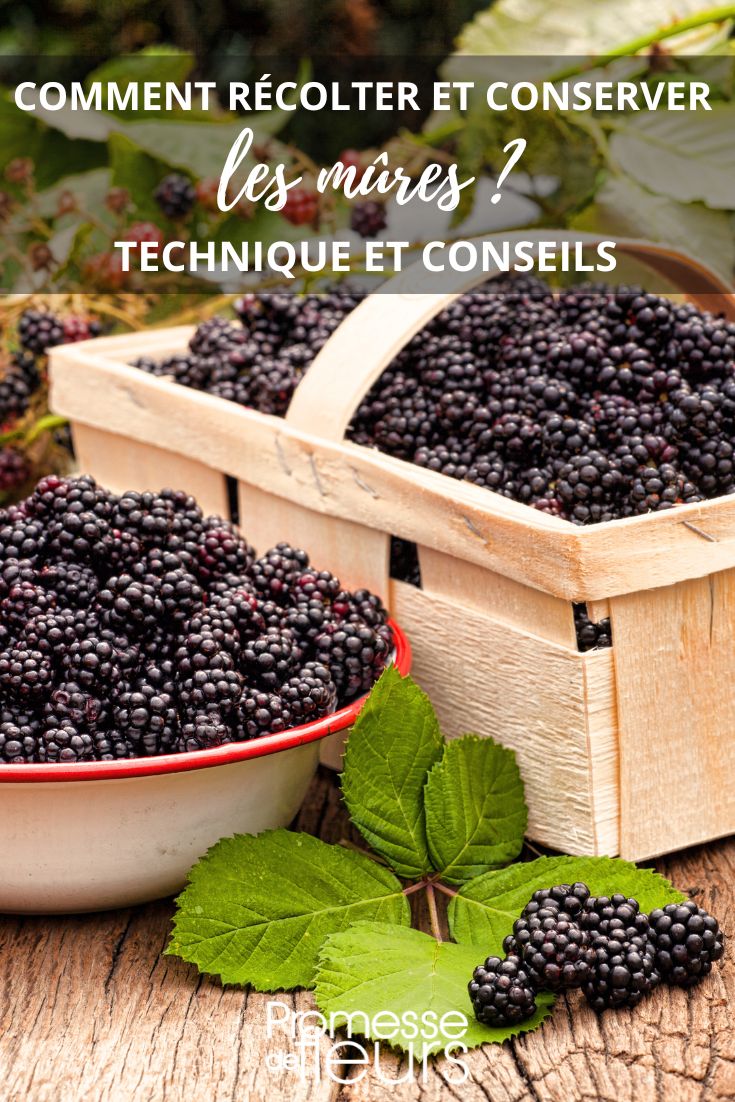
Comments